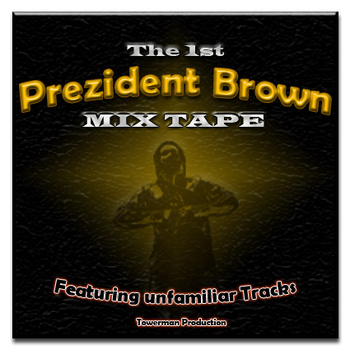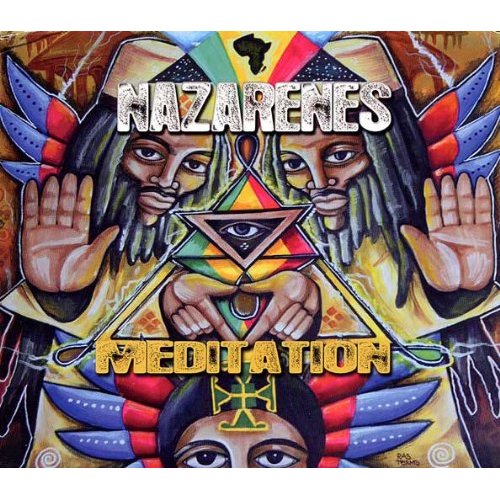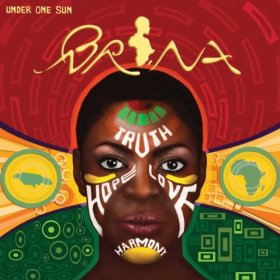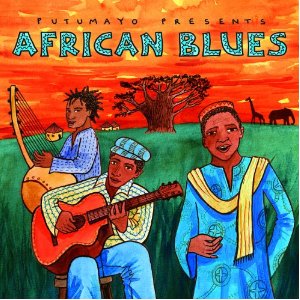
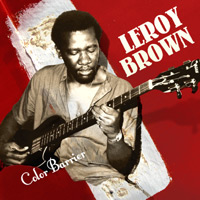 Leroy Brown: Color Barrier, Makasound, 2005
Leroy Brown: Color Barrier, Makasound, 2005
www.makasound.com
Rating: A
It was a bit of a jolt, hearing Color Barrier for the first time. I was astonished, delighted, and a little annoyed. This guy Leroy Brown – where had he been all my life? Why hadn’t I been made aware of him before? How come I had never heard his music, ever? Here I was, enjoying this wonderfully fresh and powerful roots reggae almost THIRTY years after most of it was made. Where’s the logic in that?
I’m reconciled to the apparent injustice now and getting on with life. I learned, as you will from the excellent liner notes to the CD, that in fact we have heard from Brown before, although not in solo mode. Turns out he was a member of The Emotions and The Hippy Boys way back when, and branched out on his own only after several years of writing songs, performing and recording. It also turns out that his first solo album forms the bulk of this Color Barrier disk I have been so entranced by, minus a couple of songs and augmented by several others, including extended versions and a dub.
The album is full of very likable tunes and quotable lyrics. There’s the stark narrative and damning commentary of “What a Fire.” There’s the kindly humanity and wise reassurance of “Don’t Give Up.” The angry frustration of “Rulers of Babylon.” The carefully reasoned “Stand Up Strong.” Other songs are every bit as potent, every bit as distinctive in their approach. In Brown’s world view, militancy is balanced by compassion, sufferation by responsibility, action by reflection.
The musicianship is remarkable too. With Sly Dunbar, “Horsemouth” Wallace, “Chinna” Smith, Augustus Pablo, Ansel Collins, Robbie Shakespeare, Leroy Sibbles and a bunch of other reggae stalwarts on the list of credits, how could it not be? As for the production credits, the names Channel One, King Tubby’s and Treasure Isle tell much of the story. And what about the singing, you ask? It modulates perfectly; it communicates beautifully. His voice is melodious by nature, becoming intense or understated, exuberant or mellow, as the song requires.
It’s true, I no longer resent not having heard this music before. But that is only because I can now turn to it any time I want, day or night. If you don’t have that luxury, then you, my friend, are the one now being short-changed in your life.
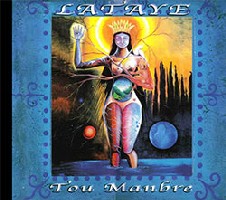 Lataye: Tou Manbre, Dadisound Productions, 2005
Lataye: Tou Manbre, Dadisound Productions, 2005
www.lataye.com
Rating: A
If Boukman Eksperyans’ Libète is comparable to The Beatles’ Sgt. Pepper, as someone has claimed, then consider Lataye’s Tou Manbre as the answer to the Paul McCartney & Wings disk Band on the Run. That’s a compliment, offered in appreciation of the interesting juxtapositions and musical adventure of both albums.
Daniel “Dadi” Beaubrun was a leading figure in the aforementioned acclaimed Haitian band, but like Paul McCartney, he eventually had to use a different musical vehicle for expression of his creativity. Thus he founded the group Lataye. Good news: the new band is terrific. Its music is warm, tuneful and rhythmic, eclectic in taste and rich in talent.
The album starts with a short, pretty ballad, strongly African in its inspiration. That same flavor proudly dominates the next track too, propelled by polyrhythms, an incredible joie-de-vivre, and what sounds like a whole village joining in at times. Then a French Creole mode takes over for “Edike” with a lead vocal that would be at home in Cajun country. The world-weariness of “M Viv Avè yo” gives way to the fast dance beat, wailing electric guitar and feverish complexity of “Dakout Sa a.”
And so it goes. Vodou rubs against reggae. Schmaltz from France and textures from Africa, reinforced by American vigor and European tunefulness. All held together by Haitian musicality. An a cappella piece takes us to Ladysmith Black Mambazo territory. A lovely, vibrant violin solo transports us into the world of classical music. With an acoustic guitar we’re suddenly in singer-songwriter mode. The tempos range from furious to rollicking to lively to casual to thoughtful. Altogether, it’s an enticing mélange.
The old Boukman Eksperyans made music for the ages. It seems that with Tou Manbre, Lataye has announced its intention to do likewise.
 King Django: Roots Tonic, Jump Up Records, 2005
King Django: Roots Tonic, Jump Up Records, 2005
www.kingdjango.com
Rating: A-
Two-thirds of the way through Roots Tonic, King Django explains that he is “a lyrics architect.” I’m puzzled about what a lyrics architect does that a lyricist doesn’t, but after 12 seconds of pondering, I have no profound insight to share on the subject. And I’m not going to ponder it again, because his royal highness also tells us he is “sometimes serious and other time in jest,” and who knows, the architect bit may be part of the latter.
Yes, King Django does like to have his fun, and a goodly part of the album is infused with that spirit. The serious stuff is just as worthy musically speaking, but the fun parts are so unusual in reggae that they deserve special consideration. Thus we have a very catchy dancehall-flavored ska which accurately proclaims that as well as a “fistful a riddim,” he also has “a mouthful a chat.” For “Rock and Come In,” the King brings Dr. Ring Ding along to toast; they trade turns at the mic, issuing insults, uttering nonsense and bragging about their ability to keep the folks dancing. A couple of tracks later comes a sauntering beat and the news that “New York neighbors, they come in thirty-one flavors,” which is a seriously jestful slant on the milieu there.
The sense of fun comes out in subtle ways at times. The cloppy, jaunty rhythm of the lead track is a definite hint to us that the reflective vocal and despairing lyrics (a love affair gone bad) are not the end of the story; life goes on. An almost rocksteady tune, “Too Many Things,” features a slightly corny Mexican touch in the trumpet. And “The Trial” with guest Rocker T explores the significant question of justice (“I am not a rude boy”), but maintains the entertainment value of the best of reggae’s courtroom songs.
I said that the more serious stuff is just as worthy, and I wasn’t jesting. Toward the end of “The Bottle” (with lyrics about seeking solace in drink) a disembodied voice calls out as if from the depths of the soul, or the bottom of the bottle. An Augustus Pablo-style melodica instrumental and a full-blown nyahbinghi hymn bring the album to a meditative close.
Roots Tonic works almost as a sampler of classic reggae styles. Not surprisingly, therefore, it is highly derivative, but that’s okay – the sharp songwriting makes it unique. “Sometimes serious and other time in jest” for sure, but highly listenable throughout.
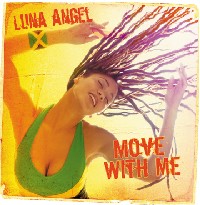 Luna Angel: Move With Me, Mountain Moon Records, 2005
Luna Angel: Move With Me, Mountain Moon Records, 2005
www.lunaangel.com
Rating: B+
I could listen for hours to Luna Angel. Not only is her soprano voice sweet and light and musical, but she makes this whole singing thing sound easy as pie. As someone who sounds strained even warbling in the shower, I’m terribly envious of Ms. Angel. So I torment myself with the pleasure of listening to her.
Move With Me takes that basic ingredient (her voice) and adds to it some propulsive reggae rhythms, appealing arrangements and interesting lyrics. The result should be a strong enticement for you to spend your allowance this week on some music. Luna seems well aware of her ability to entice; the disk’s buoyant first song is basically an open invitation to the listener. “I know you got your worries, but you can push those aside…Listen to this melody, it’s got you dancing on the double.”
From there she takes us into lovers’ rock territory: “Don’t resist me, boy/I’ve fallen head over heels for you.” It’s another breezy little seduction. Then comes a repatriation theme (“I’m moving on to Africa land”) with a strong African feel, thanks to the soukous-style guitar. After that it’s back to the love stuff for a couple of tracks.
But then Angel gets all serious again, pondering ponderous questions about life (“Please show me a sign/The position of mankind”) while maintaining her brisk vocal style. Social commentary crops up strongly in the latter half of the disk, with songs about ghetto life and images from slavery days. The closer, “Sweet Memories,” smoothly merges social conscience with personal reminiscence and longing, yielding a song more meaningful than any burn-down-Babylon diatribe would be.
The ample arrangements nicely augment Angel’s voice, while the occasional toast by Moese offers contrast. The melodies are always serviceable, and at their best even catchy. But what you’ll remember most at disk’s end is Angel’s sunlit voice. It will be a most pleasant memory.
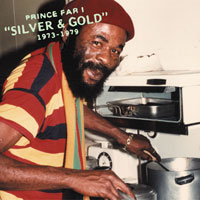 Prince Far I: Silver & Gold. 1973-1979, Blood and Fire, 2005
Prince Far I: Silver & Gold. 1973-1979, Blood and Fire, 2005
Rating: B+
It’s 1984. I’m in a store that sells a few LPs. Guy says, “Can I help you?” I ask, “What have you got in the way of reggae?” He says “You mean like Culture Club?” My jaw drops. I say, “No, like Culture.” Zip over his head. “Roots,” I say. Zip. “Hard-core reggae,” I say. “Mmm, I don’t think we’ve got much,” he says. “Maybe some Bob Marley. You can look around.”
So I look around. One bin, nothing interesting. Another bin. I flip through a third. My jaw drops. A huge close up of a scarred male face has suddenly appeared, with the name PRINCE FAR I on top and title VOICE OF THUNDER below. “I found something,” I say to the guy; “I’ll take it.” He looks at the album cover. He says, “Oh is that reggae?” “Yeah,” I say, “hard-core reggae.”
It’s 2005. A padded envelope arrives in the mail. A CD is inside. From the cover a beautiful scarred male face grins at me, and I grin back. PRINCE FAR I “SILVER & GOLD” 1973-1979, it says. Yeah, I say to myself, roots.
I put the CD on. I hear a familiar rhythm and organ riff, then a sonorous growl: Yes I skin is black. It’s him all right. The Slickers are singing Johnny you’re too bad and Far I is responding Johnny get worse! I’ve never heard Far I sound like U Roy before. I like it. I like the next song even more; a melodic “Joshua No” competes with a deeply chanted “Yes Joshua.” Then it’s into classic Far I: not much tune, all the emphasis on the rhythm, vocal and Biblically-inspired lyrics.
I listen to the originals, I listen to the dubs. Then a surprise – a very different voice. It sends me to the liner notes. I learn that it’s Errol Holt now singing. What’s he doing here? I read some more. Prince Far I produced this track, as he did most of the others. Ahh, the disk is partly Far I the chanter and partly Far I the producer and partly both.
That’s fine, I decide. Dubs, deejay versions, mixes, mixes of dubs of deejay versions – it’s all roots. It’s all good. I’m happy.
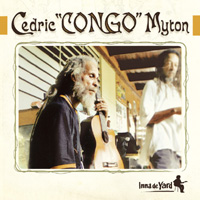 Cedric “Congo” Myton: Inna de Yard, Makasound, 2005
Cedric “Congo” Myton: Inna de Yard, Makasound, 2005
Rating: B
“Inna de Yard presents the songs the way they were created,” the promo says. This claim raises the same intriguing questions as the recent, similarly concocted Linval Thompson disk: How do you define “song”? What constitutes the act of creation? Does the “song” exist in an abstract form in the composer’s mind before he sings or plays it aloud? How “finished” does it need to be before it can be considered created? In short, what is a song, and was Plato right?
Philosophical relief comes from a line on the back cover: this music was recorded “as it was when it arose from the yards.” Okay, that’s easier. In the yard the musicians will have fleshed out the creation, i.e. the song, and given it substance. I can understand that. The notes also refer to “outdoor acoustic session.” That means un-amplified instruments. It means no fancy horseplay in the studio. It means simplicity of approach. What is does NOT mean is simplicity of outcome, because the sound is extraordinarily full at times, with lots going on (including brass, harmonica, guitar and a deep nyahbinghi foundation).
Several tracks are rebirths of songs from the mega-classic, ultra-respected and harmony-rich “Heart of the Congos” album as produced and refined to the nth degree by Lee “Scratch” Perry. Obviously, one shouldn’t compare. Naturally, one does. On this new disk, “Congo Ashanti” (AKA “Congoman”) boasts an extended brassy, jazzy treatment, with free and confident vocal (including audacious falsetto), but it sounds disjointed, with perplexing changes. In contrast, the new setting for “Children Crying” has a light texture and quick hand-drumming – ahh, now this is a full, complete, coherent song, with nothing too obvious left out. “Open up the Gate of Zion” lies somewhere between the other two in this acoustic transplantation; it seems to be missing some context, but it sure has presence.
Fortunately, not everything allows such comparisons, and most songs stand easily on their own, from the impassioned “Romeo and Juliet” to the relaxed “Forever Young” to the pleasant “Wisdom” by special guest Musical Foul.
Whether you know the earlier Congos material intimately or only by reputation, Inna de Yard offers you a pretty good hour of non-conformist reggae. Hey, you can enjoy it while pondering the meaning of “creation” and the essence of “song.” Happy contemplating.
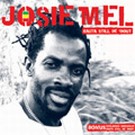 Josie Mel: Rasta Still de ‘Bout, Minor7Flat5, 2005
Josie Mel: Rasta Still de ‘Bout, Minor7Flat5, 2005
Rating: B
‘Twas the month before Christmas, and all through my place
No reggae was playing, not even a trace.
My Diskman was empty, my sound system still,
No ska or rocksteady to give me a thrill.
My albums were nestled all snug and compact,
Packed deep in some cartons and sealed, that’s a fact.
The move had been frantic, we had too much stuff,
Everything was piled high, so it really was tough.
But out my front door there arose such a clatter,
I sprang from my chair to see what was the matter.
The postman he waved a small packet at me;
So I grabbed it and kissed it, caressed it with glee.
Some music had come to my brand-new address,
An album from Rooftop Promotion, no less.
So, starved for some reggae, with nothing to risk,
I tore open the package and pulled out the disk.
The name, Josie Mel, was not someone I knew,
But talent does not equal fame, ain’t that true?
So I put on the album, the volume turned high,
And settled myself right beside the hi-fi,
When what to my wondering ears should appear,
But a fusion of reggae stylees fresh and clear:
Some Rasta talk, lover’s rock, roots tunes and more,
Some toasting, some party time, riddims galore.
I spoke not a word, but turned straight back to work,
And emptied the cartons, went nearly berserk
Getting stuff put away, ‘til the house was all neat,
The unpacking was done! A remarkable feat!
‘Twas the uplifting reggae that gave me the push,
The incentive I needed to get off my tush.
With my new house in order, things finally look right,
So good skanking to all, and to all, a good night!
Dub Station & Shaka Black: Chant Rastafari, KRucial Reggae, 2006
Rating: B
Expect a tight group sound. After all, this is Dub Station playing musical host. Expect enthusiastic, energetic, soulful singing. After all, this is Shaka Black on vocals, and I could be wrong, but I think he’s been paying attention to Toots Hibbert.
Also expect a few bumpy moments along the way. After all, eight of the eleven tracks on Chant Rastafari were recorded live, with spontaneity (which is usually interesting but isn’t always pretty) built into the end result. So a few glitches are inevitable, maybe even desirable – the music seems more honest that way, and flubs never get in the way for very long.
The songwriting on Chant Rastafari doesn’t strike me as particularly noteworthy, and most of the melodies won’t have you humming for days on end, but the performances! Ahh, the performances make the album. This is strong reggae, from the introductory “Addis Ababa” to the final scatting vocal, aggressive rhythm and scintillating organ fills of “This Way.”
In between, solid contemporary roots. Nothing really unexpected for seasoned reggae fans, mind you, but lots that is worthwhile. Such as the compelling lead vocals throughout. Such as “You Say,” a new take on a great old rocksteady tune (Okay, all together now: “You say that you love me, you say that you care, but you don’t love me”). Such as the sincerity and palpable religious spirit revealed in “Chant Rastafari.” Such as the crunchy guitar up front and travelling all over the place in “Man a Rasta.” I should also mention “Road Rage,” which offers nice little touches from all the instruments and a nice bigger solo touch from the sax, and “Jah Alone,” which generously extends its ending to allow time for a brief but welcome jam session.
All in all, Chant Rastafari proves a worthwhile venture for Dub Station and a great vehicle for Shaka Black’s energetic delivery. Expect enjoyment.
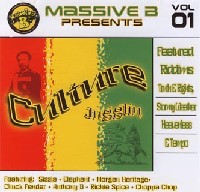 Various: Culture Jugglin Volume 1, Massive B, undated
Various: Culture Jugglin Volume 1, Massive B, undated
Rating: B-
A Boot Box just wouldn’t seem complete without a “various artists” reggae compilation. Reggae compilations are ubiquitous. They come in cheap, scattered one-disk editions and in carefully themed, beautifully packaged sets. They cater to the masses, they cater to the specialist. I have 307 of the blessed things, on DVD, CD, cassette and LP. You could probably find them 8-track, 78 and wax cylinder if you tried.
So here’s another: 16 tracks, 14 artists, four riddims, several hits, several misses, one disk.
The first riddim, “Truths and Rights,” arises from the Johnny Osbourne classic song, speeded-up and intensified. Richie Spice uses it to enlighten us about the problems facing poor and hungry youth, while Chuck Fenda claims “It’s all about the weed.” Sizzla moderates the prevailing verbal aggressiveness with a song of praise to Jah “for his goodness all these years.” “Dem A Fight We” presents Chezidek in an elastic vocal performance, although some of the melodiousness comes courtesy of the female backup harmonies. Appropriately, Osborne himself contributes his old lyrics under this new setting, supplemented by deejay Burro Banton who branches off briefly into Peter Tosh territory. Khari Kill then takes a gruff and breathless last shot at the first rhythm with “Picture of Selassie I.”
With a switch of riddims, we’re on to a hoarse Sizzla, almost out of control in his frantic praises to Jah, and from there into an adventurous but shapeless (in the way an obese person is shapeless), all-over-the-place abomination from Bounty Killer grunting about “the grass, the weed, the hemp.” It takes Morgan Heritage to salvage something half worthwhile from this clumsy riddim, as they do with “Reggae Music.”
Anthony B is preachy but comes as a relief as we move into the more subtle, vibrant and interesting third riddim. Burro Banton does a fine job with it too with another intense dancehall sermon. One of the album’s most interesting and listenable tracks comes from Elephant Man singing and chanting about rude boys, revolutionaries, the Virgin Mary and more. The set closes with Sizzla’s third album appearance, a strangely fragile vocal performance in which he (yet again) praises Jah.
Final riddim. The most friendly and bouncy of the bunch. Chronicle lets loose with some old Eek-A-Mouse vocal tricks for a tuneful and fun “Jah Rise.” Norris Man is “once bitten, twice shy” but comes across as pretty confident anyway. “It’s a lovely day,” Choppa Chop enthuses, and his breezy performance brings Culture Jugglin Volume 1 to a close.
And that’s it. A “various artists” compilation. The Boot Box is complete.

